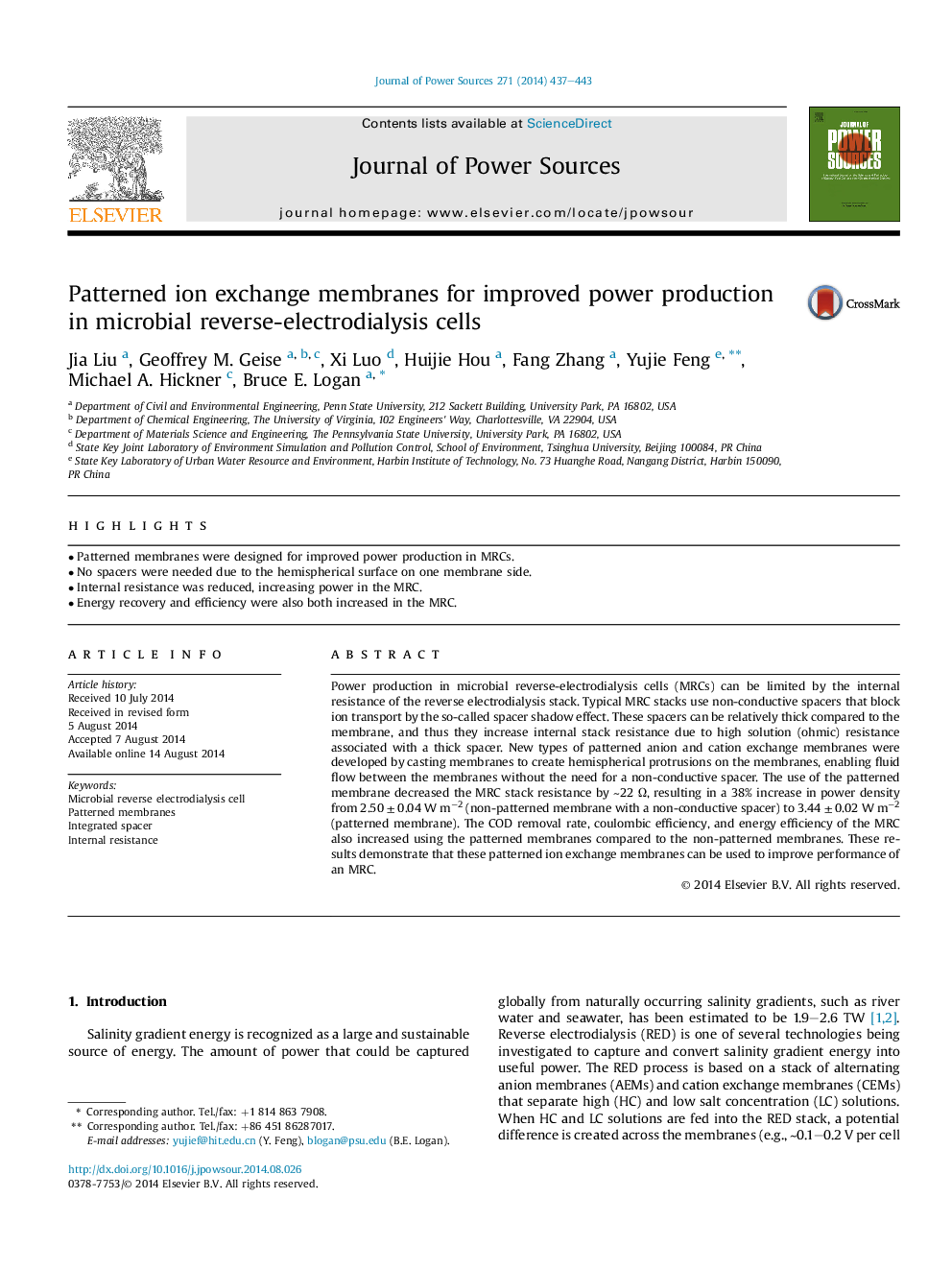| Article ID | Journal | Published Year | Pages | File Type |
|---|---|---|---|---|
| 7735365 | Journal of Power Sources | 2014 | 7 Pages |
Abstract
Power production in microbial reverse-electrodialysis cells (MRCs) can be limited by the internal resistance of the reverse electrodialysis stack. Typical MRC stacks use non-conductive spacers that block ion transport by the so-called spacer shadow effect. These spacers can be relatively thick compared to the membrane, and thus they increase internal stack resistance due to high solution (ohmic) resistance associated with a thick spacer. New types of patterned anion and cation exchange membranes were developed by casting membranes to create hemispherical protrusions on the membranes, enabling fluid flow between the membranes without the need for a non-conductive spacer. The use of the patterned membrane decreased the MRC stack resistance by â¼22 Ω, resulting in a 38% increase in power density from 2.50 ± 0.04 W mâ2 (non-patterned membrane with a non-conductive spacer) to 3.44 ± 0.02 W mâ2 (patterned membrane). The COD removal rate, coulombic efficiency, and energy efficiency of the MRC also increased using the patterned membranes compared to the non-patterned membranes. These results demonstrate that these patterned ion exchange membranes can be used to improve performance of an MRC.
Keywords
Related Topics
Physical Sciences and Engineering
Chemistry
Electrochemistry
Authors
Jia Liu, Geoffrey M. Geise, Xi Luo, Huijie Hou, Fang Zhang, Yujie Feng, Michael A. Hickner, Bruce E. Logan,
